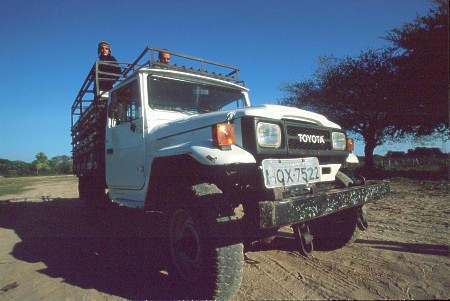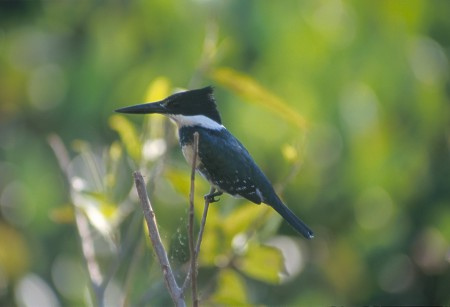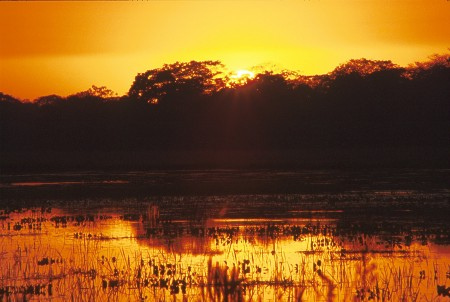Bodoquena
Intro text to be completed
Serrano is located in a set, which is part of the Serra da Bodoquena, with an average altitude of 285 m, making it the most pleasant temperature. The existence of limestone in the region favors the formation of sinkholes, depressions and caves with speleothems. The rivers and streams that cross Bodoquena provide conditions for free diving practice and boating. The trails that border the rivers allow the observation of animals such as macaws, toucans, tapirs and capybaras. The Rio Betione has more than 40 waterfalls with bathing areas, trails through the riparian forest and vantage points to admire the scenery. The farms, many of them centuries old, are located on its banks and usually organize tours.
The rivers and streams that cross the city of Bodoquena go through many waterfalls with bathing areas, surface dive sites and trails, which are seen toucans and macaws, and peccaries, tapirs and capybaras. It also has dozens of caves with different types of speleothems. The daily life and the history of farms from the colonial period are known walking and riding to better explorer properties with up to 5000 ha area.
OUTSKIRTS
Gruta do Urubu-Rei
A 22 km from Bodoquena, pels road linking Morraria
Their visitation structure is limited to a steep trail that follows the rapids. The name is associated with high concentration of this bird in its vicinity. Located 15 meters high, on a wall over 150 m, has 800 m of horizontal projection mapped with medium width and height of 3:05 m. In some places, it is necessary to proceed to crawl inside. It has a spring and speleothems such as stalagmites, stalactites, columns and curtains. For cracks with a depth of untapped water, and a cascade of approximately 10 m on its front face. The guide help is indicated.
Gruta Califórnia
Fazenda Califórnia, 55 km from Bodoquena, by dirt road (BR-389). From 8 to 17 h
Morraria located in the Serra da Bodoquena, has panoramic views of the area to display the Field of Indians, a local Indian reservation. The farm organizes trips on foot or on horseback to observe waterfalls and caves, like California, which has about 150 m long, 40 wide and 20 high. In the cave there is a sink, spot where the river disappears among the rocks. The tours must be booked in advance.
Córrego Azul
A 28 km from Bodoquena (14 km by paved road) and a river crossing.
Brackish tributary of the river, about 800 meters long and 30 meters wide. A conserved riparian forest borders the stream, which rises emu ma crack in the base of a rocky wall. Its crystal clear waters with currents favor the surface of diving practice and boat trips for watching fish and water lilies. The tours (R $ 10 per person) are done in groups up to ten people, accompanied by a guide. Fishing and riding in motor boats are prohibited.
Trilha Ecológica da Boca da Onça
Fazenda Boca da Onça, 35 km from Bodoquena the road to Bonito
His name is due to the large concentration of jaguars in the past. A trail of about 3 km cuts a bush native replete with centenary trees, birds and wild animals, leading the visitors to the Hole monkey, a depression with 5 m deep, where the waters pass through a tunnel and 20 m in height. On the way, they are also seen four waterfalls: the Anta, with 15 m; the Jabuti, with 5 m; Fantasma, with 40 m; and Vento, with about 156 m, which quea water forms a veil before the paradões of Bodoquena saw. There is a restaurant on site.
Fazenda Indiana
It is at km of highway to Miranda, 17 km.
From 7 am to 11 am, and from 13 to 17 h.
Own landing strip for small planes, from where scenic flights, for three people, the Pantanal, with over-flight Fort Coimbra in Rio Paraguay (R $ 400).
Organizes horseback riding and ride (R $ 120 per person) boat by Brackish River, which includes bath, visit to Blue Stream, lunch and in the afternoon, visit the Black Bay. Also offers horseback riding after lunch (R $ 70). The two paths you can see deer, macaws, alligators, tapirs, deer, fish, capybaras, peccaries and toucans.
Farm Betione
Road to Corumba, 4 km
This dude ranch has a good structure, which includes 18 apartments, swimming pool, restaurant, recreation area and nature trails within 5 km. Furthermore, one can make long rides 6 km, by a region of 1,300 ha. This area can be found more than 40 waterfalls, 7 of which have easy access, and animals such as capuchin monkeys, tapirs, pacas, coatis, agoutis and collared peccaries. You can also see fish such as gold, the piraputanga and piau. The tours are priced at $ 15 per person.
Hotel-Fazenda Betione
Name of indigenous origin, which means anteater, born in the vicinity of Finance waterfall and flows into the Rio Miranda. Runs over 50 km within Bodoquena, through 30 private properties. Your Aquas are crystal clear, with depths of up to 5 m by 50 m wide at some points. Form natural pools where fish are found as piraputangas, golden, piaus and minnows.
Form about 80 waterfalls, some with up to 12 m, the Fazenda da Serra Prudente to Fazenda São Cristóvão. Along the river are found platforms for swimming, trails bordering the river with bridges suspended 20 meters high and resorts that receive many visitors, such as Perseverance, located on an island of 5 hectares and charges R $ 3 entry.
History (Bodoquena)
By 1950, the government of then State of Mato Grosso Agricola deployed a colony in its own grounds in the Serra da Bodoquena, yet municipality of Miranda. The first settlers who settled there were Chico Mineiro and Alfredo Pedro de Araujo. The road linking the colony Miranda was known as Trail Walkers of the Faith, a journey of 55 km, whose name is associated with the difficulties faced by the settlers to cross on foot the woods, hills, streams and wetlands. During the floods, it was almost impossible to cross the Rio Miranda.
The colony grew, forming the Town of Friendship, with a commercial establishment. On December 14, 1963, it was elevated to a district with the name of Campão. It was the largest producer of corn, rice and feijoa Miranda municipality, but reduced the Agricola activity and expanded livestock, their main source of income, with a cattle herd of 37 million head, distributed in 384 rural properties. On May 13, 1980, he went to the category of municipality, under the name of Bodoquena.
Come-Language Legend
Emu farm ma withdrawal, near the border with Paraguay, there lived a boy whose family was dedicated to small plantations. One day, his father asked his wife to send the boy to take a language roast cow on the farm, for him to eat at lunch. Very unwillingly, the boy took the language to her father, but ate the best part in the way. When the father saw the undone, he asked the boy who had done it. The frightened boy said he was a man that his mother received at home. His father came home angry and, without question, made three stabs done in the wife, who, dying, asked him why he had stabbed. When the woman discovered that her son had lied, she begged him a curse: "Always you will eat live animals of languages, and everyone you meet ahead." Since then, there have been reports of farmers who find dead animals without tongue.
** SORRY - THIS PAGE IS STILL UNDER CONSTRUCTION **
Waterfalls and Bonito
The Bonito waters are rich in calico carbonate, due to the limestone rocks, typical of the region. It is for this reason that its waters are brackish gusto and clarity, caused by the deposition of particles on river bottoms. When the waters come in contact with algae and mosses, give rise to limestone formations that grow vertically over the years, forming small dams, known as travertine. Thus, the Rio Formoso became emu ma series of lakes connected by waterfalls.
Kadiweu crafts
The Kadiweu Indian Reservation is located in the Serra da Bodoquena south of the Pantanal, and has a populace of over a thousand people. The potter work and decorative art early start among women, unlike men, have abandoned the traditional craft activities. Today, its production of ceramics and drawings are geared almost entirely to trade. The manufacture of parts such as pots, plates and vases, as well as paintings on paper, leather, or the body, still follows the traditional techniques with the use of pigments extracted from trees like rosewood, juice jenipapo mix with powder coal and colorful pottery. Parts can be found in the Casa de Artesão (Rua Coronel Pilad Rebuá), next to City Hall. From 8 am to 11 am, and from 14 to 18h.
Legend of the 700 moons
Cacai was the most beautiful of young Terena, an indigenous nation of the Serra da Bodoquena. The chief of his tribe chose to bride, and invited her to the covenant of 700 moons, during which they would be known. During courtship, Cacai fell in love with a prisoner warrior of the Terena, and did not want to marry the chief, leaving him angry. Still, the ritual was carried out with the pronouncement of the ceremonial words. After the wedding, Cacai escaped with the prisoner in a canoe at Formoso river, breaking the tradition of the tribe. The chief gathered his warriors and went in pursuit of the couple, who ended up dead with arrows in curacao. The blood that fell into the river cleared its waters, until they become crystal clear. Today, many associate this transparency of the waters of Bonito rivers purity of curacao young Terena.
Waterfalls and Bonito
The Bonito waters are rich in calico carbonate, due to the limestone rocks, typical of the region. It is for this reason that its waters are brackish gusto and clarity, caused by the deposition of particles on river bottoms. When the waters come in contact with algae and mosses, give rise to limestone formations that grow vertically over the years, forming small dams, known as travertine. Thus, the Rio Formoso became emu ma series of lakes connected by waterfalls.
Kadiweu crafts
The Kadiweu Indian Reservation is located in the Serra da Bodoquena south of the Pantanal, and has a populace of over a thousand people. The potter work and decorative art early start among women, unlike men, have abandoned the traditional craft activities. Today, its production of ceramics and drawings are geared almost entirely to trade. The manufacture of parts such as pots, plates and vases, as well as paintings on paper, leather, or the body, still follows the traditional techniques with the use of pigments extracted from trees like rosewood, juice jenipapo mix with powder coal and colorful pottery. Parts can be found in the Casa de Artesão (Rua Coronel Pilad Rebuá), next to City Hall. From 8 am to 11 am, and from 14 to 18h.
Legend of the 700 moons
Cacai was the most beautiful of young Terena, an indigenous nation of the Serra da Bodoquena. The chief of his tribe chose to bride, and invited her to the covenant of 700 moons, during which they would be known. During courtship, Cacai fell in love with a prisoner warrior of the Terena, and did not want to marry the chief, leaving him angry. Still, the ritual was carried out with the pronouncement of the ceremonial words. After the wedding, Cacai escaped with the prisoner in a canoe at Formoso river, breaking the tradition of the tribe. The chief gathered his warriors and went in pursuit of the couple, who ended up dead with arrows in curacao. The blood that fell into the river cleared its waters, until they become crystal clear. Today, many associate this transparency of the waters of Bonito rivers purity of curacao young Terena.
History (Bodoquena)
By 1950, the government of then State of Mato Grosso Agricola deployed a colony in its own grounds in the Serra da Bodoquena, yet municipality of Miranda. The first settlers who settled there were Chico Mineiro and Alfredo Pedro de Araujo. The road linking the colony Miranda was known as Trail Walkers of the Faith, a journey of 55 km, whose name is associated with the difficulties faced by the settlers to cross on foot the woods, hills, streams and wetlands. During the floods, it was almost impossible to cross the Rio Miranda.
The colony grew, forming the Town of Friendship, with a commercial establishment. On December 14, 1963, it was elevated to a district with the name of Campão. It was the largest producer of corn, rice and feijoa Miranda municipality, but reduced the Agricola activity and expanded livestock, their main source of income, with a cattle herd of 37 million head, distributed in 384 rural properties. On May 13, 1980, he went to the category of municipality, under the name of Bodoquena.
By 1950, the government of then State of Mato Grosso Agricola deployed a colony in its own grounds in the Serra da Bodoquena, yet municipality of Miranda. The first settlers who settled there were Chico Mineiro and Alfredo Pedro de Araujo. The road linking the colony Miranda was known as Trail Walkers of the Faith, a journey of 55 km, whose name is associated with the difficulties faced by the settlers to cross on foot the woods, hills, streams and wetlands. During the floods, it was almost impossible to cross the Rio Miranda.
The colony grew, forming the Town of Friendship, with a commercial establishment. On December 14, 1963, it was elevated to a district with the name of Campão. It was the largest producer of corn, rice and feijoa Miranda municipality, but reduced the Agricola activity and expanded livestock, their main source of income, with a cattle herd of 37 million head, distributed in 384 rural properties. On May 13, 1980, he went to the category of municipality, under the name of Bodoquena.
Come-Language Legend
Emu farm ma withdrawal, near the border with Paraguay, there lived a boy whose family was dedicated to small plantations. One day, his father asked his wife to send the boy to take a language roast cow on the farm, for him to eat at lunch. Very unwillingly, the boy took the language to her father, but ate the best part in the way. When the father saw the undone, he asked the boy who had done it. The frightened boy said he was a man that his mother received at home. His father came home angry and, without question, made three stabs done in the wife, who, dying, asked him why he had stabbed. When the woman discovered that her son had lied, she begged him a curse: "Always you will eat live animals of languages, and everyone you meet ahead." Since then, there have been reports of farmers who find dead animals without tongue.
Emu farm ma withdrawal, near the border with Paraguay, there lived a boy whose family was dedicated to small plantations. One day, his father asked his wife to send the boy to take a language roast cow on the farm, for him to eat at lunch. Very unwillingly, the boy took the language to her father, but ate the best part in the way. When the father saw the undone, he asked the boy who had done it. The frightened boy said he was a man that his mother received at home. His father came home angry and, without question, made three stabs done in the wife, who, dying, asked him why he had stabbed. When the woman discovered that her son had lied, she begged him a curse: "Always you will eat live animals of languages, and everyone you meet ahead." Since then, there have been reports of farmers who find dead animals without tongue.








Photo Credits: Spectacled Caiman (Shutterstock/Dirk Ercken)
Pantanal Escapes